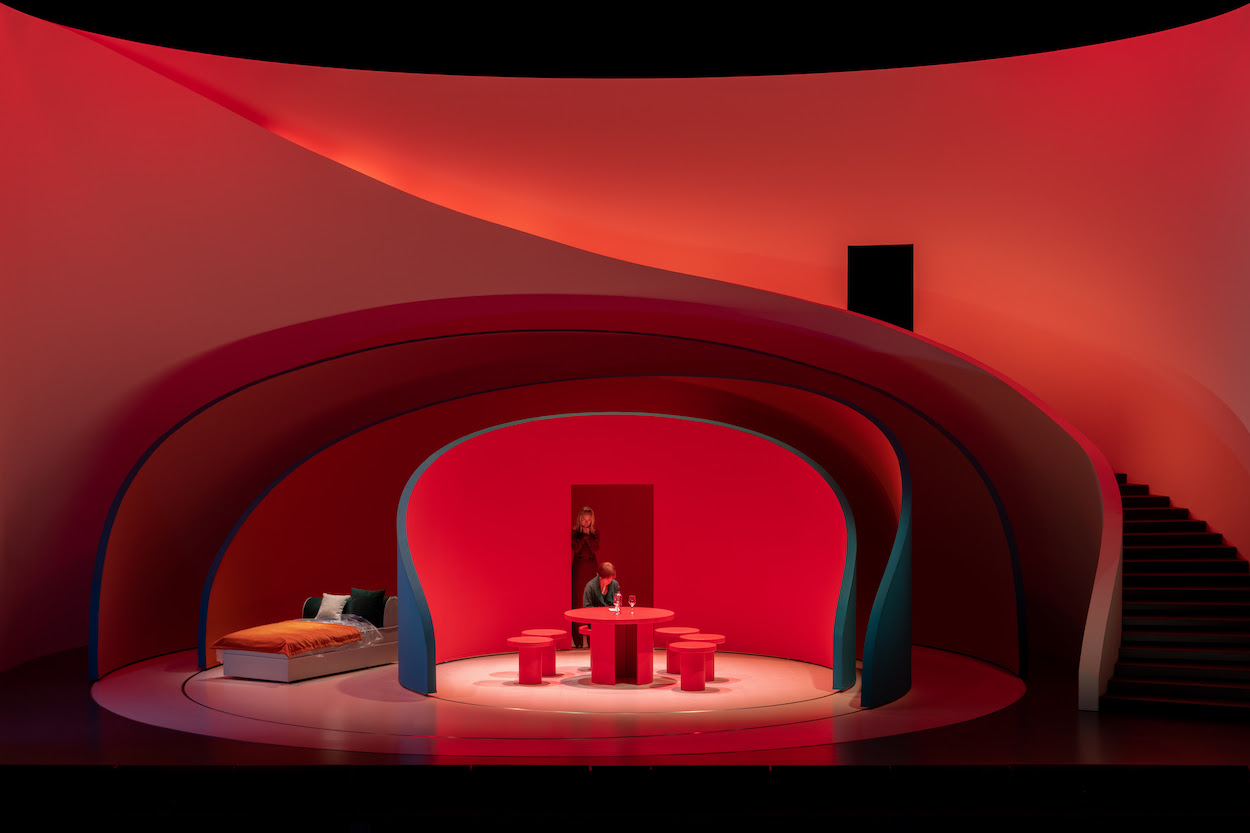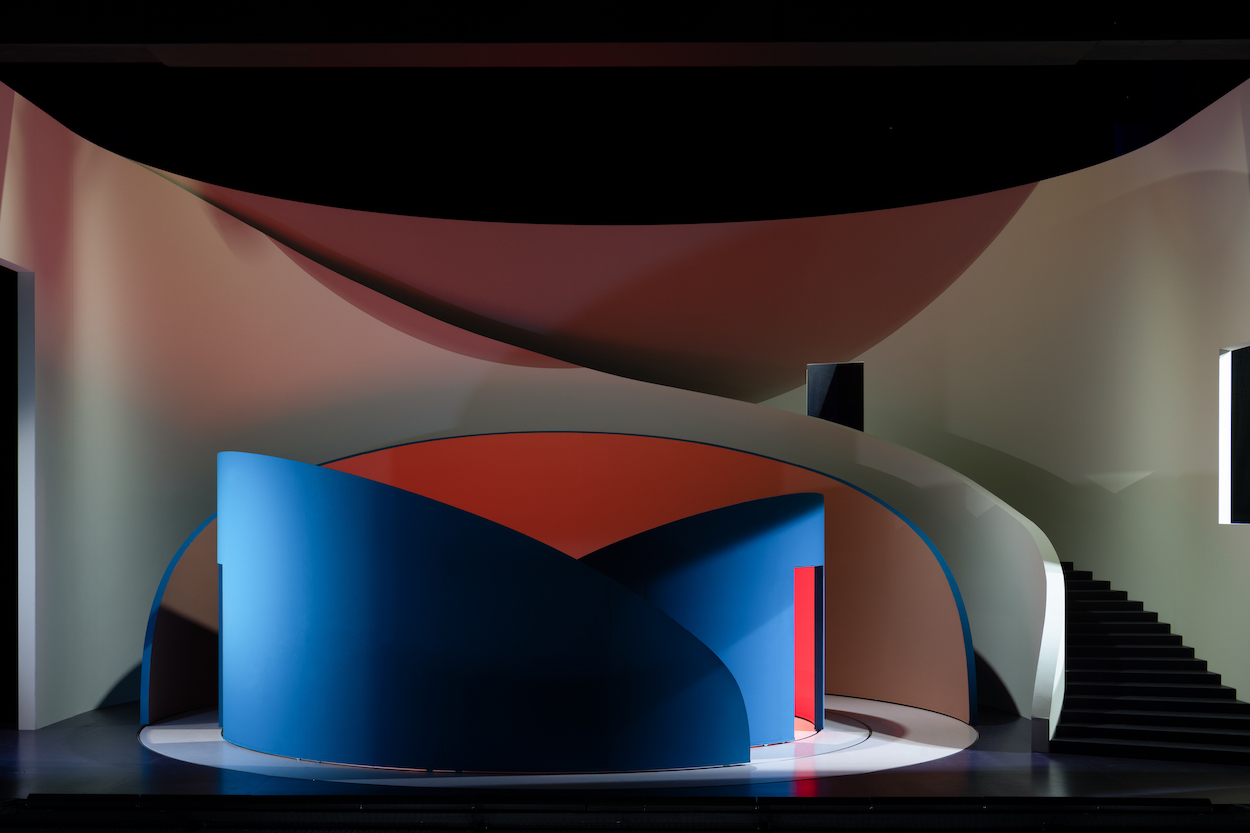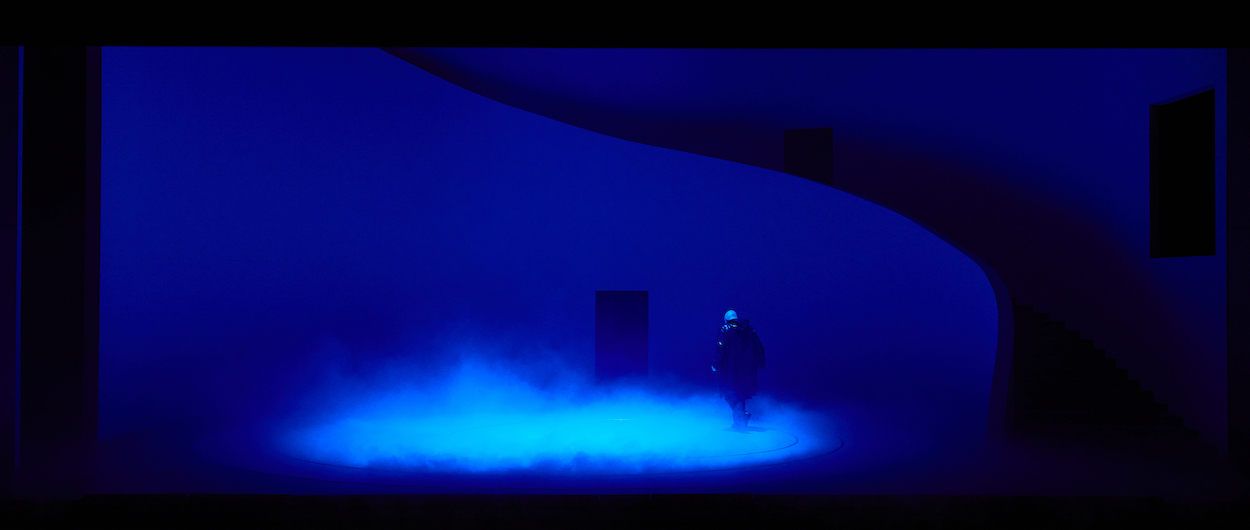Giuseppe Verdi’s 1851 opera Rigoletto is many things: a fable of a cursed court jester; an evisceration of toxic masculinity; an opera Verdi considered revolutionary in form, even as his contemporaries condemned the dark work as satanic. That opinion gradually shifted towards adoration, eventually winning praise even from modernist maestros like Igor Stravinsky.
Over the weekend, Switzerland’s Theater Basel revealed what can be made ofRigoletto today. The new staging boasts direction by Vincent Huguet and stars Swiss soprano Regula Mühlemann in her debut as the jester’s doomed daughter, Gilda. But its biggest draw might be Huguet’s enlisting of renowned interior designer Pierre Yovanovitch, whose work is generally as sleek as it is chic, to envision the sets. It’s his first adventure in theatrical scenography. “When he proposed to me this opportunity,” Yovanovitch tells Surface, “I felt like a kid in a playground. Imagining the scenography for this story was an incredibly exciting challenge.”
Perhaps surprisingly for a work with ever-shifting moral compasses, Yovanovitch’s sets are quite simple, at least at first glance. But then, as the power balance shifts and the plot launches into motion, so do the set’s graceful curves. What once feels intimate becomes voyeuristic, claustrophobic, and unstable. “All the characters are made endearing by their psychological complexity, by the alliance in each of them of the odious and the sensitive, of submission and freedom,” he says. “This makes it remarkably contemporary and I wanted the physical set to reflect that aspect of the storyline.” We say bravo.
Below, see the set in action.




